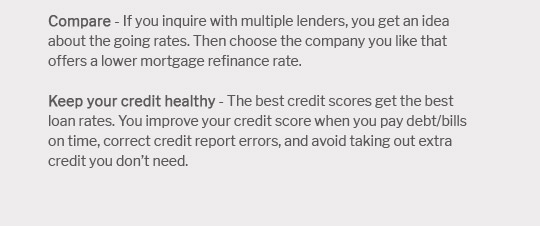 |
|||
 |
 |
 |
 |
|
|---|---|---|
 |
 |
|
 |
 |
|
 |
 |
 |
 |
Understanding Mortgage Interest Rates in Ohio: A Complete Beginner’s GuideNavigating the world of mortgage interest rates can often seem like an overwhelming task, especially for first-time homebuyers in Ohio. With a myriad of options and fluctuating rates, understanding the core principles is essential. This guide aims to demystify the process, providing clarity on what influences these rates and how you can secure the best deal for your dream home. Firstly, it's important to recognize that mortgage interest rates are not static; they vary based on several economic factors. In Ohio, as in the rest of the United States, these rates are influenced by the Federal Reserve's policies, inflation trends, and the overall economic climate. For example, when the economy is robust and inflation is on the rise, the Federal Reserve may increase rates to prevent overheating. Conversely, during economic downturns, rates might be lowered to stimulate borrowing and spending. Another critical factor is your personal financial profile. Lenders assess your credit score, income stability, and debt-to-income ratio to determine the risk of lending to you. A higher credit score typically translates to a lower interest rate, as it reflects responsible financial behavior. Therefore, maintaining good credit health is advisable for prospective homebuyers. Ohio offers a diverse range of mortgage options, each with unique interest rate structures. The most common types include fixed-rate mortgages, adjustable-rate mortgages (ARMs), and government-backed loans such as FHA and VA loans. Fixed-rate mortgages are popular for their stability, offering a constant interest rate over the life of the loan. This predictability makes them attractive to those who plan to stay in their homes long-term. In contrast, adjustable-rate mortgages typically start with lower rates that adjust over time based on market conditions, which can be beneficial if you anticipate changes in your financial situation or plan to move before the rate increases.
Ohio also benefits from a competitive real estate market, which can impact interest rates. Urban areas like Columbus or Cleveland might see different rates compared to rural regions, influenced by demand and housing availability. Staying informed about these regional trends can help you make strategic decisions. In conclusion, securing the best mortgage interest rate in Ohio requires a blend of market awareness, personal financial health, and understanding of your long-term goals. As a prospective homeowner, taking the time to research and prepare can lead to significant financial benefits. Consulting with a trusted mortgage advisor can also provide personalized insights, ensuring you navigate this complex landscape with confidence and clarity. https://www.bankrate.com/mortgages/mortgage-rates/ohio/
As of Friday, March 28, 2025, current interest rates in Ohio are 6.81% for a 30-year fixed mortgage and 6.08% for a 15-year fixed mortgage. Refinance rates in ... https://www.nerdwallet.com/mortgages/mortgage-rates/ohio
Today's mortgage rates in Ohio are 6.855% for a 30-year fixed, 6.002% for a 15-year fixed, and 7.142% for a 5-year adjustable-rate mortgage (ARM). Check out our ... https://www.usbank.com/home-loans/mortgage/mortgage-rates/ohio.html
Annual percentage rate (APR) represents the true yearly cost of your loan, including any fees or costs in addition to the actual interest you pay to the lender.
|
|---|